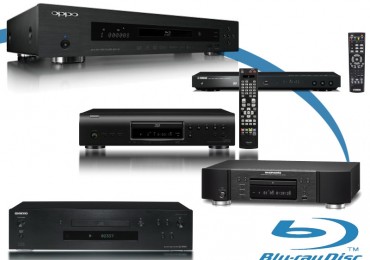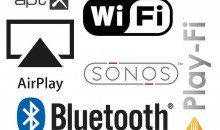Choosing the Best Blu-ray Player
Choosing the best Blu-ray player is a bit more difficult than it might seem. You have to really understand your needs before you can make a decision. Do you want the best video quality available on the market? Do you desire the most streaming media services possible? Do you want to be able to stream music and movies from your DLNA-compatible computer over your home network? Perhaps you just want to get something that plays BD discs and does it adequately for the least amount of money possible. Really, you’re choosing the best Blu-ray player for your particular needs. Knowing that will help simplify the process of making the choice. So which person are you?
I Want the Blu-ray Player with the Best Possible Video Quality
This isn’t as difficult a choice as it may seem—unless you’re on a tight budget. Using objective video tests (BD discs and spectrometers) we can pretty much guarantee that one of the best players available today on the market is the Oppo BDP-103 with Marvell QDEO processing. Of course, the new BDP-103D is coming out with Darbee Visual Presence video processing which should be even more impressive, as it promises to deliver more realistic detail and depth to 2D images. The latest Oppo player will set you back $499, and the special Darbee Edition will add $100 to that price. If you’re a Denon fan, the DBT-3313UDCI includes an advanced MediaTek video processor which does an excellent job. That player runs around $1000 (No, we didn’t add an extra zero in there). Kinda makes the Oppo look like a bargain now, doesn’t it?
If that’s too steep for you, then read on (but realize that if you’re particularly discerning you might be sacrificing a bit of quality to save some money.)
I Want a More Affordable Blu-ray Player with the Best Possible Video Quality
OK, now we’re getting somewhere. Perhaps you’re not into spending that much on a BD Player (though we highly recommend it!) If you want excellent quality for a bit less cost, you can look at models from Yamaha or others that have a good reputation. We’re particularly fond of manufacturers who also make great audio and video components, knowing that they at least have the know-how to build a player that meets their existing standards for audio and video quality. What I mean by that is that if you wouldn’t buy either a television or AV receiver from the company, chances are that their $99 BD player isn’t going to do anything other than put some pixels on the screen at the right resolution. Things like motion artifact reduction and noise processing may be an issue. You may also have problems with longer HDMI cable runs to a projector since the electronics used to boost the signal (this is called “pre-EQ”) at the source are critical for these extended distances.
I Want a Player with Lots of Streaming Media Options
Most Blu-ray players today have streaming media services as part of their interface, but not all players are the same. While nearly everyone has Netflix, a smaller amount have Hulu Plus or VUDU. Still fewer have Amazon Video on Demand or YouTube. Hardly any have Crackle, HBO Go or Roku-compatibility. Before you shop for a player, discover and decide upon what streaming media services you’re going to want to use first. The player you choose should allow you to access all of that streaming content.
Even if two players have the same content, it doesn’t mean they’ll offer the same level of quality. Often, a player runs that content through its video processing system, so a higher-end player will produce and better picture than a lesser-equipped product.
I Still Use a Legacy Receiver and Need Analogue Audio Outputs
If you still need multi-channel analogue audio outputs on your Blu-ray player your choices are going to be much smaller. Manufacturers can save a lot of money going with just a single HDMI output. That means that you are starting to look at premium pricing for that analogue audio functionality—at least with most players. This isn’t exactly a bad thing, because most AV receivers don’t do bass management on their analogue audio inputs. With that being the norm, these settings must be done in the player. A cheaper player will likely have very few options in this area, though any player with analogue outputs will have some type of configuration for the speakers used.
Conclusion
If you were expecting tons of models numbers and absolute references, I can only hope that you understand the Blu-ray player landscape changes too quickly for that. I’d rather help you understand how to choose the best Blu-ray player than choose one for you. That way, you can help others, and you’ll also be a veteran the next time a lightning bolt or other unfortunate incident causes you to have to “upgrade” your player.







I’m looking for a Bluray player to use primarily as my CD player. So, I’m looking for something with great sound, but I don’t need all of the bells and whistles that come with most players (streaming, 4K, etc). It would connect via HDMI to a NAD T757. Any suggestions? Should I be looking for old models from Oppo, Denon, NAD, etc?
It’s hard to find models without bells and whistles these days. You can get basic models, but they’re not the highest quality.